Wanted to Buy
If you have a Canon EF 600mm f/4L IS III USM lens sitting on a shelf in your garage, unused for months, and would like to get some good money for it, please get in touch via e-mail..
Your Call
If you favor one of today’s two featured images over the other, please leave a comment and let us know why you made your choice.
|
|
|
This all-new card includes images created on my JAN 2022 visit to San Diego. Click on the composite to enjoy a larger version. |
The 2022/23 San Diego Brown Pelicans (and more!) IPTs
San Diego IPT #1. 3 1/2 DAYS: WED 21 DEC thru the morning session on Saturday 24 DEC 2022. $2099.00. Deposit: $699.00. Limit: 6 photographers/Openings: 5.
San Diego IPT #2. 4 1/2 DAYS: SAT 7 JAN thru the morning session on WED 11 JAN 2023: $2699.00. Deposit: $699.00. Limit: 6 photographers/Sold Out.
San Diego IPT #3: 4 1/2 DAYS: THURS 19 JAN thru the morning session on MON 23 JAN 2023: $2699.00. Deposit: $699.00. Limit: 6 photographers.
Please e-mail for information on personalized pre- and post-IPT sessions.
Join me in San Diego to photograph the spectacular breeding plumage Brown Pelicans with their fire-engine red and olive green bill pouches; Brandt’s (nesting) and Double-crested Cormorants; breeding plumage Wood and Ring-necked Ducks; other duck species possible including Lesser Scaup, Redhead, Northern Shoveler and Surf Scoter; a variety of gulls including Western, California, and the gorgeous Heermann’s, all in full breeding plumage; shorebirds including Marbled Godwit, Willet, Sanderling and Black-bellied Plover; many others are possible including Least, Western, and Spotted Sandpiper, Whimbrel, Black and Ruddy Turnstone, Semipalmated Plover, and Surfbird; Harbor Seals and California Sea Lions (both depending on the current regulations and restrictions). And as you can see by studying the IPT cards, there are some nice bird-scape and landscape opportunities as well. Not to mention a ton of excellent flight photography opportunities and instruction.
Please note: where permitted and on occasion, ducks and gulls may be attracted (or re-located) with offerings of grains or healthy bread.
|
|
|
San Diego offers a wealth of very attractive natural history subjects, including and especially the Pacific race of California Brown Pelican. With annual visits spanning more than four decades, I have lots of photographic experience there … Click on the composite to enjoy a larger version. |
Learning Exposure, Whether You Like It Or Not
Whether you like it or not, we will be beating the subject of exposure like a dead horse. In every new situation, you will hear my thoughts on exposure along with my thoughts on both Nikon and Canon histograms and SONY Zebras. Whether you like it or not, you will learn to work in manual mode so that you can get the right exposure every time (as long as a bird gives you ten seconds with the light constant). Or two seconds with SONY zebras … And you will learn what to do when the light is changing constantly. What you learn about exposure will be one of the great takeaways on every IPT.
|
|
|
Though the pelicans will be the stars of the show on this IPT, there will be many other handsome and captivating subjects in wonderful settings. Click on the composite to enjoy a larger version. |
It Ain’t Just Pelicans
With gorgeous subjects just sitting there waiting to have their pictures taken, photographing the pelicans on the cliffs is about as easy as nature photography gets. With the winds from the east almost every morning there is usually some excellent flight photography as well, often with 70-200mm lenses! And the pelicans are almost always doing something interesting: preening, scratching, bill pouch cleaning, or squabbling. And then there are those crazy head throws that are thought to be a form of intra-flock communication. You will be guided as to how to make the best of those opportunities. Depending on the weather, the local conditions, and the tides, there are a variety of other fabulous photo chances available in and around San Diego.
|
Did I mention that there are lots of great birds and natural history subjects in San Diego in winter? Click on the composite to enjoy a larger version. |
The San Diego Details
These IPTs will include four or five 3-hour morning photo sessions, three or four 1 1/2-hour afternoon photo sessions, and three or four working brunches that will include image review and Photoshop sessions. On rare cloudy days, we may — at the leader’s discretion, stay out in the morning for a long session and skip that afternoon. To ensure early starts, breakfasts will be your responsibility. And so that we can get some sleep, dinners will be on your own as well. In the extremely unlikely event that Goldfish Point is closed due to local ordinance (or whimsy) — that has never happened in the past fifty years, I will of course do my very best to maximize our photographic opportunities.
|
|
|
San Diego offers a wealth of very attractive natural history subjects, including and especially the Pacific race of California Brown Pelican. With annual visits spanning more than four decades, I have lots of photographic experience there … Click on the composite to enjoy a larger version. |
Deposit Info
A $699 deposit is required to hold your slot for one of the 2022/23 San Diego IPTs. You can send a check (made out to “BIRDS AS ART”) to us here: BIRDS AS ART, PO Box 7245, Indian Lake Estates, FL, 33855, or call Jim or Jennifer at the office with a credit card at 863-692-0906. Your balance, payable only by check, is due three months before the trip.
|
Variety is surely the spice of life in San Diego. Click on the composite to enjoy a larger version. |
Getting Up Early and Staying Out Late
On all BIRDS AS ART IPTS including and especially the San Diego IPT, we get into the field early to take advantage of unique and often spectacular lighting conditions and we stay out late to maximize the chances of killer light and glorious sunset silhouette situations. We often arrive at the cliffs a full hour before anyone else shows up to check out the landscape and seascape opportunities.
What’s Up?
As is typical, things started off slowly at Sebastian Inlet on Saturday. By 10:00am the action began picking up and continued at least until 1:30pm (when I left). There were a dozen or so Ospreys in the air fishing much of the time along with dozens of Royal Terns and Laughing Gulls. With mostly sunny skies and a north/northeast wind, photography was difficult at best; once the birds hit the water they flew directly away from us. I started with the hand held 600mm f/4, went to the 200-600 when it became totally sunny, and ended with the handheld 400mm f/2.8 when it got cloudy for a brief while. With the light changing drastically from minute to minute getting consistently perfect exposures was a challenge even with Zebras.
Today is Sunday 30 October 2022. I head over to DeSoto this afternoon for the 3rd DeSoto Fall IPT. The Bar-tailed Godwit continues. Wherever you are, and whatever you are doing, I hope that you too have a great day. This blog post took about two hours to prepare including the time spent on the image optimizations and makes two hundred-eighteen days in a row with a new one.
Please remember to use the B&H and Amazon links that are found on most blog pages and to use the BIRDSASART discount code at checkout when purchasing your new gear from Bedfords to get 3% back on your credit card and enjoy free second-day air FedEx. Please, also, consider joining a BAA IPT. You will be amazed at how much you will learn!
You can find some great photo accessories (and necessities, like surf booties!) on Amazon by clicking on the Stuff tab on the orange/yellow menu bar above. On a related note, it would be extremely helpful if blog-folks who, like me, spend too much money on Amazon, would get in the habit of clicking on the Amazon logo link on the right side of each blog post when they shop online. As you might expect, doing so will not cost you a single penny, but would be appreciated tremendously by yours truly. And doing so works seamlessly with your Amazon Prime account.
Please remember that if an item — a Delkin flash card, or a tripod head — for example, that is available from B&H and/or Bedfords, is also available in the BAA Online Store, it would be great, and greatly appreciated, if you would opt to purchase from us. We will match any price. Please remember also to use my B&H affiliate links or to earn 3% cash back at Bedfords by using the BIRDSASART discount code at checkout for your major gear purchases. Doing either often earns you free guides and/or discounts. And always earns my great appreciation.
Brand-New and As-Good-As-Ever Bedfords BAA Discount Policy
Folks who have fallen in love with Bedfords can now use the BIRDSASART coupon code at checkout to enjoy a post-purchase, 3% off-statement credit (excluding taxes and shipping charges) on orders paid with a credit card. The 3% credit will be refunded to the card you used for your purchase. Be sure, also, to check the box for free shipping to enjoy free Second Day Air Fed-Ex. This offer does not apply to purchases of Classes, Gift Cards, or to any prior purchases.
Money Saving Reminder
Many have learned that if you need a hot photo item that is out of stock at B&H and would like to enjoy getting 3% back on your credit card along with free 2nd Day Air Fed-Ex Air shipping, your best bet is to click here, place an order with Bedfords, and enter the coupon code BIRDSASART at checkout. If an item is out of stock, contact Steve Elkins via e-mail or on his cell phone at (479) 381-2592 (Central time). Be sure to mention the BIRDSASART coupon code and check the box for Free Shipping. That will automatically upgrade to free 2nd Day Air Fed-Ex. Steve has been great at getting folks the hot items that are out of stock at B&H and everywhere else. The waitlists at the big stores can be a year or longer for the hard-to-get items. Steve will surely get you your gear long before that. For the past year, he has been helping BAA Blog folks get their hands on items like the SONY a 1, the SONY 200-600 G OSS lens, the Canon EOS R5, the Canon RF 100-500mm lens, and the Nikon 500mm PF. Steve is personable, helpful, and eager to please.
Important Note
As an Amazon Associate, I earn a small percentage when you purchase from Amazon after using any of the Amazon links on the blog (including the logo-link on the right side of each blog post page). My affiliate link works fine with Amazon Prime and using it will not cost you a single cent. Huge thanks, BTW 🙂


Gear Questions and Advice
Too many folks attending BAA IPTs and dozens of photographers whom I see in the field and on BPN, are — out of ignorance — using the wrong gear, especially when it comes to tripods and more especially, tripod heads. And the same is true in spades when ordering new camera bodies or lenses. My advice will often save you some serious money and may help you avoid making a seriously bad choice. Please know that I am always glad to answer your gear questions via e-mail. If you are desperate, you can try me on my cell at 863-221-2372. Please leave a message and shoot me a text if I do not pick up.
|
|
|
This image was created on 16 January 2022 on a Diego/Brown Pelican IPT. While seated using the knee-pod technique, I used the handheld Sony FE 200-600mm f/5.6-6.3 G OSS lens (at 600mm) and The One, the Sony Alpha 1 Mirrorless digital camera.) The exposure was determined using Zebra technology with ISO on the Thumb Dial. ISO 1250. 1/500 second at f/6.3 (wide open) in Manual Mode. AWB at 10:26:54am on a cloudy morning. RawDigger showed the exposure to be dead-solid perfect. Tracking: Zone/Bird Eye-Face AF-C performed perfectly. Click on the image to enjoy a high-res version. Heerman’s Gull adult calling — gently backlit
|
Determining Your Minimum Handholding Shutter Speed for a Given Situation
When handholding a telephoto lens for bird photography, each photographer must determine the lowest shutter speed with which they can create consistently sharp images for a variety of situations. Several factors must be taken into account. Those include:
a- The focal length
b- The sharpness technique you are using
c- The potential for subject movement.
Here are my thoughts on my personal minimum shutter speeds when working at 600mm. When adding a teleconverter, you will need to increase your minimum shutter speed.
1- For birds in flight, 1/3200 sec. is preferred. I will go higher on sunny days with fast lenses. With slower flying subjects, 1/2500 and 1/2000 sec. should be fine. When trying to avoid super-high ISOs, shutter speeds as low as 1/500 sec. may produce sharp images on occasion. If you are able to perfectly match the speed of the bird in flight with your panning speed, it is possible to create sharp on the eye images at shutter speeds down to 1/60 or even 1/30 sec. On occasion, when caught with my pants down, I have followed my own advice to shoot now and ask questions later and made some sharp flight images with shutter speeds of 1/160, 1/250, 1/320, and 1/400 sec. You can call those accidental successes.
2- For walking or swimming birds I will go with 1/1000 sec in most lighting conditions. When using the knee-pod or foot-pod techniques, you can cut that in half.
3- When photographing birds that are moving slowly such as when calling, or displaying, I generally will want to be at at least 1/500 sec., even in low light situations, and even when knee-podding or foot-podding.
4- When photographing completely static subjects, I will generally try for 1/250 sec. when standing at full height. When seated and knee-podding I am comfortable at 1/125 sec. and will try 1/60 sec. in very low light situations.
You can only learn your minimum required shutter speeds by trial and error. All of the minimums above may be reduced when working with shorter focal length lenses or with shorter focal lengths when using a zoom lens. Note that some folks who may always opt for shutter speeds of from 1/2000 to 1/3200 sec. in static situations without worrying about high and mega-high ISOs so that they are always ready for flight and action.
|
|
|
This image was created on 16 January 2022 on a Diego/Brown Pelican IPT. While seated using the knee-pod technique, I used the handheld Sony FE 200-600mm f/5.6-6.3 G OSS lens (at 600mm) and The One, the Sony Alpha 1 Mirrorless digital camera.) The exposure was determined using Zebra technology with ISO on the Thumb Dial. ISO 1250. 1/500 second at f/6.3 (wide open) in Manual Mode. AWB at 10:26:57am on a cloudy morning. RawDigger showed the exposure to be dead-solid perfect plus a bit more. Tracking: Zone/Bird Eye-Face AF-C performed perfectly. Click on the image to enjoy a high-res version. Heerman’s Gull adult calling — gently backlit
|
A High-Level Exposure Fine Point Question
Image #1 and 2 were created just three seconds apart in the same light with the same settings: ISO 1250: 1/500 sec. at f/6.3.
How is it possible that RawDigger showed no over-exposed pixels along the top of the bird’s head in Image #1, yet revealed significant over-exposure in the rim-lit area on the top of the gull’s head in Image #2?
Typos
With all blog posts, feel free to e-mail or to leave a comment regarding any typos or errors.

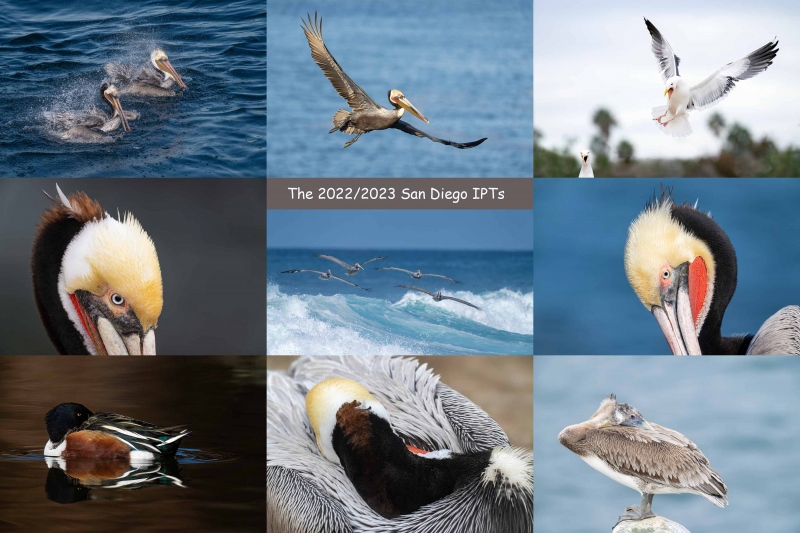
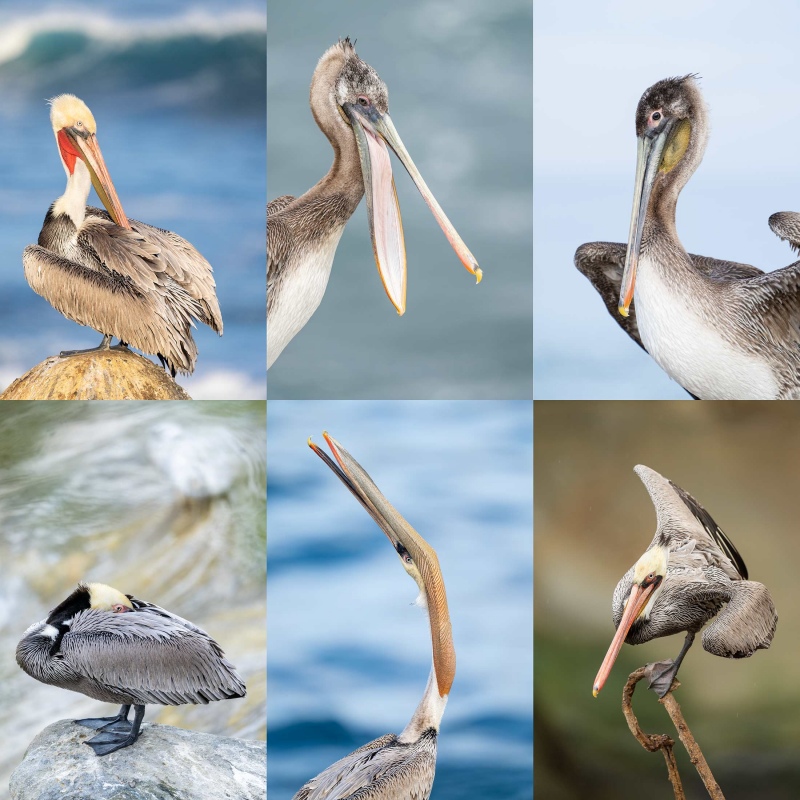
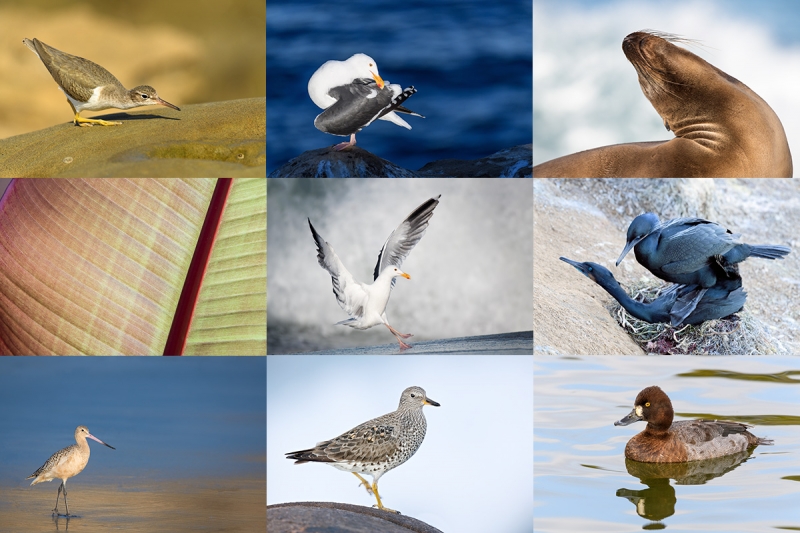

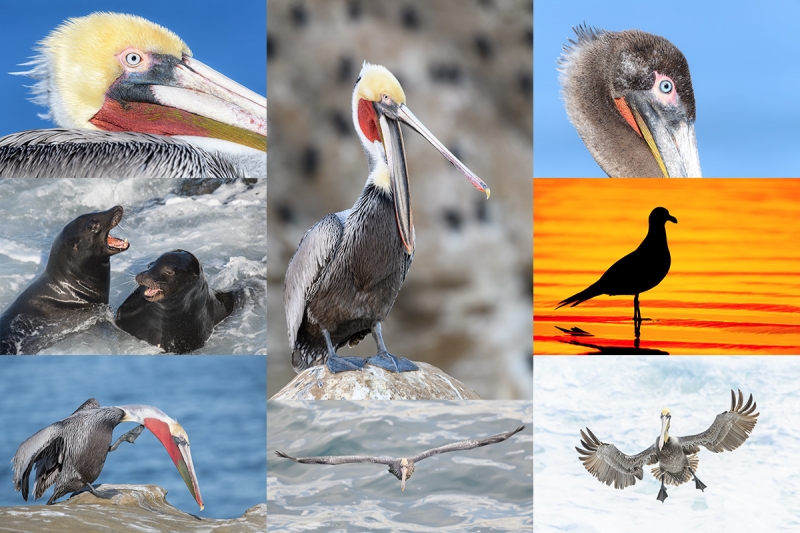


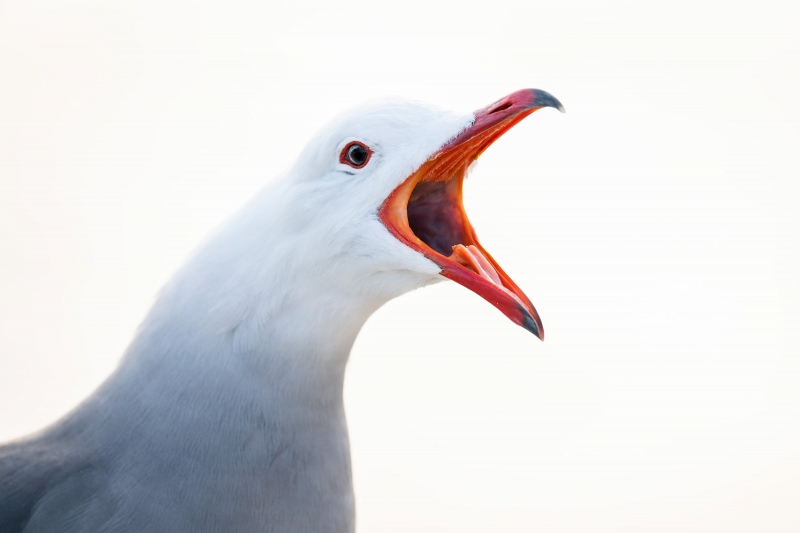
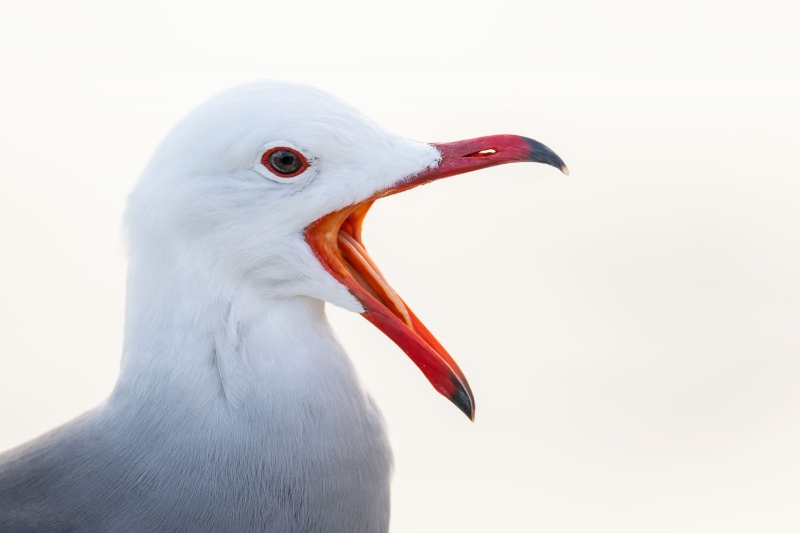













Heerman’s Gull. I bet spell check got you in your post above. it got me when I tried to type just now.
#1 Heerman’s Gull is my favorite. I can hear it calling, probably swearing. Just trying to interpret the action in #2, the gull could be calling or yawning as birds do yawn. It’s certainly not swearing.
instead of post above, I should have just said post on the spelling.
Like both but would pick #1. Maybe more direct interaction with viewer.
Thanks, Doc.
with love, artie
Both of the pictures Herman’s Gull adult calling are cute and good! #2 is just a little bit closer to Herman’s Gull adult calling then #1 is. But still both are cute and good!!
I like the 2nd picture better. In the first, the pose seems extreme and not to my liking. Good timing on your part, tho. So hovering over the pictures the links say Heermans gull, yet your label is for Herman’s Gull. I’ve seen it on Google as Heermann’s, which just adds to my confusion. My Sibley is in another room and I will check as soon as I post. No idea about the over-exposure. I’m just learning about RawDigger. Hopefully you’ll enlighten us.
Thanks, Keith. The bird is, of course, Herman’s Gull. I compounded my error by cut and pasting the type in Image #1. I must have been listening to “I’m ‘Enery the Eighth I Am” as I typed.
with love, artie